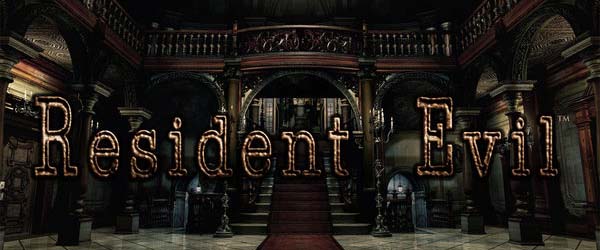
Not having a GameCube meant that I unfortunately missed out on some pretty high-quality games. Probably the most notable ones were Eternal Darkness and the remake of Resident Evil, neither of which, by itself, was enough to sell me on a console. I've since been able to play through a friend's copy of Eternal Darkness, and I had started on Resident Evil, but never got around to finishing it. When the HD remaster showed up on PSN, I was hesitant to buy it, since I knew that I could just play it on my friend's GameCube eventually.
Best of both worlds at the tip of your thumb
However, something in the previews really intrigued me. And that was the compromise that Capcom found for the never-ending conflict between the tank-style controls of the original PSX game and the analog control of newer games. Since I grew up with Resident Evil, Silent Hill, and other survival horror and similar adventure games, I've never had a problem with tank controls. They tend to be the lesser evil when dealing with static camera angles that change unpredictably (as in Resident Evil), and they are perfectly serviceable for behind-the-back or overhead cameras (as in the outdoor areas of Silent Hill). This ensures that the controls remain consistent during camera angle changes, since they are always relevant to the character rather than the camera.
But apparently, some people hate that control paradigm. They criticize it for making the characters feel too slow and lumbering, and that it lacks precision. The controls have oft been cited as one of the reasons for Resident Evil's declining popularity after Resident Evil 2, and supposedly ditching them was a major factor in the "renaissance" that was [supposedly] Resident Evil 4. But let me remind you that Resident Evil 4 had the exact same controls, and the character was just as slow and lumbering (if not moreso). The only difference was that the camera was moved to behind-the-back, and the gameplay switched to an action shooter rather than a more adventure-puzzle kind of game. So really, your problem was never with the controls...
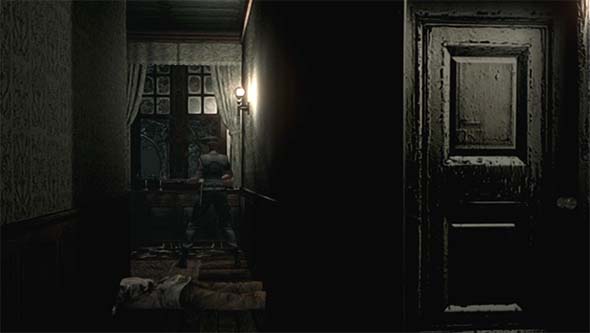
The original Resident Evil was criticized for how its controls and camera lead to frequent blind corners,
wasted ammunition, and cheap kills. The critics were right, but it wasn't game-breaking...
Regardless, analog control has its own baggage train of problems. Pressing the stick in one direction can cause the character to make sudden changes of direction if the camera suddenly changes. This can be mostly avoided by locking the character's movement as long as the player doesn't release or rotate the stick - and the HD Remaster does implement this. But this still leads to sudden turn-arounds when the player needs to move the character around a corner, since you sometimes have to move the stick to the exact opposite direction that you were pressing. And in cases in which the camera angle changes at the point where a change of direction is required to go around a corner or navigate an obstacle (which happens often), then the character can easily get lost in a cycle of spinning around between the two camera zones.
So there is no perfect solution to the problem of static cameras, but I tend to prefer the tank method due to its guarantee of consistency - even at the cost of some slow turning speeds. In any case, advocates of either paradigm should find exactly what they want in this remaster, since both configurations are implemented in the remastered game's default control scheme! Capcom's clever (and elegant) solution was to simply map the tank controls to the directional pad, while leaving the free analog movement on the analog stick. Players are, thus, free to alternate between whichever control they prefer without even having to go into a menu to change it. You can even alternate between them, on the fly, in the heat of the action if the situation warrants it, because I can definitely see how the analog movement could work well in some of the [rare] larger, open areas of the map (particularly for boss fights).
It's OK to hate these red-headed step-zombies
Most of the changes introduced in the GameCube remake serve to add further challenge. The most prominent display of this is the new "Crimson Head" zombie mechanic. If you kill a zombie and didn't manage to get lucky enough to blow its head off, you must burn its body in order to prevent it from resurrecting later in the game as a more dangerous "Crimson Head". These red-headed zombies are faster and more damaging than their precursor form. They can rapidly run across a room and grab you before you even realize they are there. They are also very well-tutorialized, since most players will probably encounter their first Crimson Head while attempting to retrieve the Armor Key from the hallway trapped with suits of armor on rails. The previous hallway includes a dead body that (if you didn't go out of your way to burn previously) will resurrect at this time. This hall has a system of mirrors in place that allow a tremendous degree of visibility from virtually every camera angle, meaning that whichever door you enter from, you'll have an opportunity to see the Crimson Head coming after you. It's a frantic and frightening moment!
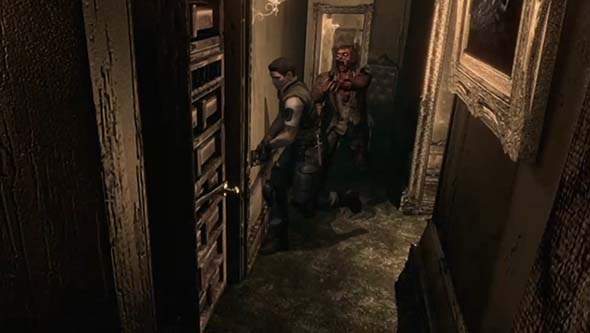
Bodies that you don't burn will resurrect as faster, more deadly "Crimson Heads"
that are difficult to avoid and require a second investment in resources to defeat.
Almost any zombie in the game can potentially turn into this more dangerous form. Destroying their head with a lucky shot or burning their bodies are the only ways to permanently ensure that they can't attack you... [More]
bedbfed9-e92f-45b6-b083-1b57db8977fc|1|5.0
Tags:Resident Evil, HD, remaster, remake, port, Capcom, survival horror, Jill Valentine, Chris Redfield, Albert Wesker, mansion, zombie, save, save system, tank controls, checkpoint, typewriter, ink ribbon, resource management, puzzle, logistics, GameCube, b-movie, Shinji Mikami
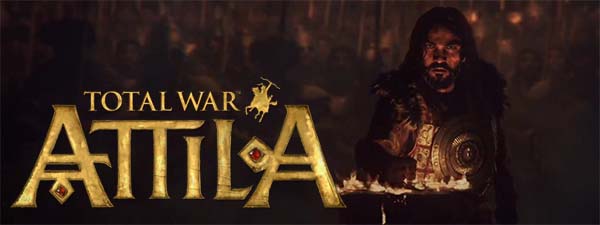
A few months ago, I posted an article outlining some suggestion for unique civilization themes and abilities for a possible Sid Meier's Civilization VI game. In it, I proposed a unique characteristic for the Huns or Mongolians: that they be a true nomadic empire. The idea was that they would have traveling cities that allowed them to move their empire with their army and essentially occupy any unclaimed territory or territory vacated by defeated rivals. Well, the Creative Assembly had already beaten me (and Firaxis) to the punch with Total War: Attila (and apparently Firaxis is embracing the idea with Beyond Earth's first expansion). Total War: Attila has a feature almost identical to what I had conceived for the Huns and Mongolians in Civilization. I'm a fan of the Total War series as is, so I was going to play this game for sure. Of course, Creative Assembly running with an idea that I had independently conceived of only made me more curious to play the game.
Attila acts as sort of a sequel to Rome II. While that game was all about building up the Roman empire (or whichever empire you happened to select), Attila is all about tearing down those empires. But this is a fully stand-alone game (like Napoleon Total War was to Empire Total War), and does not require Rome II in any way.
Learning how to be a horde
The Prologue campaign in this game is brutal! It's like a Demon's Souls tutorial that is designed to kick your ass. I restarted it once before realizing that it was designed for the player to fail in order to teach the new migration feature.
This prologue acts as a tutorial for the new features and mechanics of the game, but it doesn't do a particularly good job of teaching these mechanics. It also doesn't go into much detail of the established features of the franchise (other than telling you that a feature exists, then making you click on the button to do it), so new players might find themselves completely turned off by the fact that they are having their asses handed to them and aren't being taught much about how the game actually works, or - more importantly - why they are failing so hard. Perhaps having two separate tutorial campaigns would have been advisable: one to teach basic Total War concepts of empire and army management; and a second tutorial campaign for experienced Total War players that just teaches the migration features.
The brutal tutorial concludes with the challenging, climactic, historical battle of Adrianople,
in which your Visigoths must hold off Emperor Valens' superior army until your cavalry arrives.
Playing as migratory hordes minimizes city management, but you do still have to develop infrastructure for your nomadic armies. Rebuilding conquered cities and defending your borders, however, is not an issue - which was always the most tedious part of the game anyway. You don't need defensive armies in your territory and are free to focus all your efforts on your eventual goal. This change works well with the requirement that all armies must be attached to generals, and is a big step up from Rome II. There were large chunks of Rome II's campaign in which I felt like I couldn't do anything because I had to camp out my armies in cities in order to replenish and improve public order. Since I was at the army cap, the campaign would stagnate because I couldn't build new armies in order to watch over my newly-conquered settlements while also pressing forward with my primary armies... [More]
da530405-0213-4b1a-93c4-503924d797fd|0|.0
Tags:Total War, Total War: Attila, Creative Assembly, Sega, PC, Steam, Attila, Attila the Hun, Huns, Rome, Western Roman Empire, Eastern Roman Empire, Constantinople, Byzantine Empire, Sassanid Empire, Europe, Goths, Visigoths, Ostragoths, Germanic tribes, Franks, Saxons, Vandals, strategy, turn-based strategy, real-time strategy, grand strategy, history, campaign, horde, migration, climate change, the Great Migration, steppe, Sid Meier's Civilization, war, nomad, siege
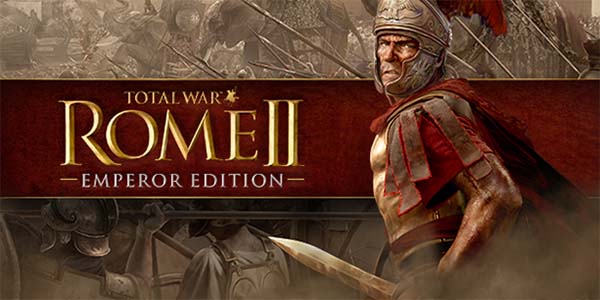
A couple years ago, I wrote an impressions post for Total War: Rome II with a tentative review score of 5 out of 10. I never got around to writing a full review of the game because it remained in a near constant state of flux for over a year after its release. The developers kept adding new DLC ranging from modest culture packs to the tiny Blood & Gore pack. Last year, Creative Assembly released a massive DLC pack that also included across-the-board balance updates and expansion of some of the game's core features. This "Emperor Edition", and its attached Imperator Augustus campaign was free to everyone who bought the original Rome II, and so I decided to give it a try to see if it greatly improved the game.
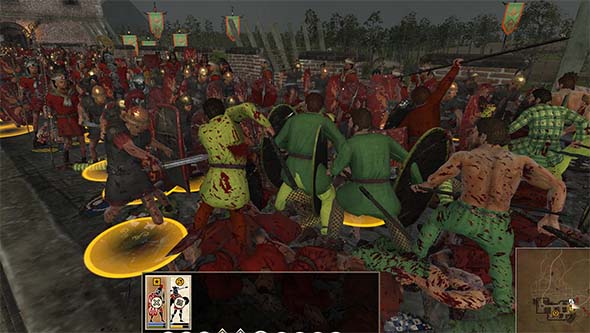
Blood & Gore costs a few dollars extra for those who want it, and increases the ESRB rating to Mature.
Core gameplay has subtle changes
Most of the changes to the core game are subtle, but they do add up to create a more enjoyable experience. The A.I. isn't nearly as bad as it originally was, and naval battles are actually playable now. Building effects have been completely rebalanced in order to avoid the problems with rampant squalor and lack of food that plagued the core game, and the politics systems have been changed to be more active and relevant to the game. Unfortunately, many of these changes are so sweeping, that they break existing campaign save games, meaning that if your version of Rome II was automatically updated, then you lost the ability to continue with any of your previous campaigns.
The most notable changes to empire management is that resources and building upgrades allow for much greater specialization of your various regions. This combined with the rebalancing of squalor and food means that there is incentive to actually upgrade your buildings past the first couple of levels. You also have some more meaningful decisions on what buildings you want to build and upgrade.
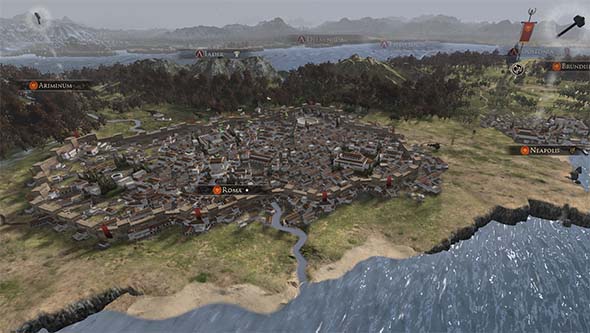
Squalor is no longer an intractable restriction towards building the glory of Rome.
Cities still physically grow on the map as the population grows and more buildings are constructed, and many of the high level buildings can add unique visual flairs to individual cities. It's also informative, since it's easy to see (at a glance) what infrastructure a city might have, which can help you manage your own empire, and can help you to assess the worth of a city for potential conquest.
A.I.s have also been designed to build higher-level settlements and to manage their armies better. Having higher-level buildings means that they have larger armies with more advanced units and better equipment. They provide a much greater challenge, as well as more tempting targets of conquest now. I haven't run into situations in which major factions (Carthage) dissolve into rebellions at the start of the game like I used to see in the base game.
Higher morale means battles last longer
Perhaps the best improvement that's been made by the post-release patches and the Emperor Edition is that the real-time battles are paced much better. Unit morale has been significantly tweaked so that units don't route and flee as soon as they make contact with a superior enemy force. Battles will generally take more than just a couple of minutes to complete, but they still aren't anywhere close to occupying the entire hour that the battle timer allows.
You'll actually have time to move some support units to help out an outnumbered defender before they flee, so there's also a lot more strategy involved in the individual battles. Reserve forces and cavalry flanking maneuvers have more relevance, and generals actually have time to reach front-line units in order to use their powers. You don't have to just clump all your units together in a single wall and ram them into your opponent anymore. You can even engage the enemy with a smaller force if you are stuck having to wait for reinforcements to arrive.
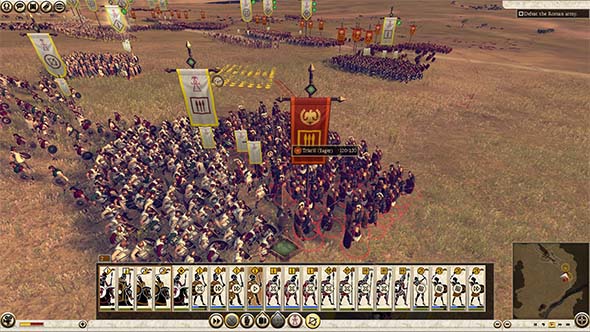
Tactical battles are slower, making cavalry and reserves more relevant, and allowing for more strategic thinking.
Speaking of cavalry, they are actually useful now, since units are generally more responsive to movement commands. In the initial launch version, I found cavalry to be useless because once they engaged an enemy unit, it was almost impossible to disengage without the whole unit getting routed or wiped out. Basically the only thing they were useful for was chasing down enemy skirmishers or flanking artillery. Now, I actually build and use cavalry because they are useful for hit-and-run attacks against regular melee infantry. You still want to keep them away from the pointy end of spears and pikes, but that's to be expected.
I still wish the battles were slowed down a little bit more, but the pacing is a lot better than it was at release. I still rarely see battles last more than 5 minutes of actual fighting, and I still routinely have to pause the game in order to issue orders because unit movement and combat happens so fast ... [More]
457b05a7-62ac-45d9-a1b0-5c8730e665e3|0|.0
Tags:Total War, Total War: Rome II, Rome: Total War, Creative Assembly, Sega, PC, Steam, Europe, Rome, Roman Empire, strategy, grand strategy, real-time stratey, turn-based strategy, history, campaign, war, siege
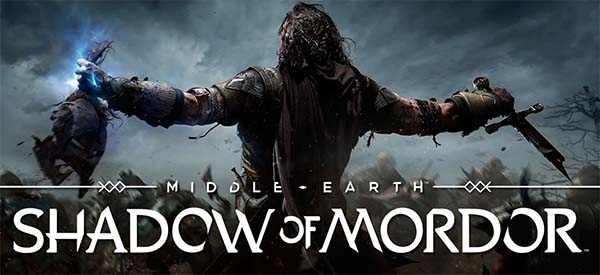
Shadow of Mordor was a game that almost sold me on the next gen consoles. I knew I was going to need a PS4 for Bloodborne, and I was very tempted to buy one early so that I could play Mordor. The central game mechanic of orc NPCs fighting amongst each other in order to become Sauron's personal favorite sounded like an interesting mechanic for organic story-telling. It was a concept that sounded like something truly deserving of the name "next gen". The biggest thing that held me back was the fact that the game was also available on last-gen consoles, so I figured it probably wasn't pushing any serious boundaries of game design.
Bat-Assassin's Creed: Arkham Middle Earth
The basic gameplay is highly derivative of Assassin's Creed and the Batman Arkham games. It ports both of these feature sets more or less as competently as those original games, including the same perks and problems. The free running feature suffers from the same lack of control that plague's Assassin's Creed, in that it's sometimes hard to predict exactly where the character will land, and he loves to climb up a wall if you run too close to it. Is it really that hard to allocate a dedicated "climb" or "jump" button?! In Mordor's defense, every button on the controller is mapped to something, so at least it has an excuse (unlike Assassin's Creed with its redundant jump button).
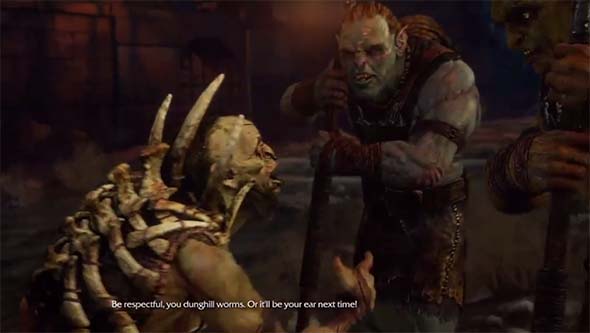
The martial culture of the orcs means that when they find a dead comrade,
they assume he was murdered by an ambitious peer, leaving the player off-the-hook.
Stealth mechanics work pretty well; although the orcs are a bit oblivious to my movements through the game world. Sometimes, I can be moving right across their field of vision within 10 feet of them, but because I'm crouched or hanging off a wall, they just don't see me. Orcs don't care much about each other. Their martial culture means that when they find a fellow orc dead, they assume that he was killed due to his own stupidity, or in a brawl / duel with another orc. This removes the need to drag and dispose of bodies while also masking the fact that orcs don't look for the player when they find a dead body. There are examples of stealth games in which enemy guards don't notice or care about dead bodies that they find, and that's always immersion-breaking. Shadow of Mordor cleverly turns what could have been an immersion-breaking limitation of the A.I. into an appropriate element of the world and narrative. As long as they don't actually see you kill their fellow orc, you can rest assured that throwing an archer off a ledge won't alert any guards who pass below to your presence.
Combat mechanics are almost identical to Arkham Asylum, except you have an ethereal bow instead of all the gadgets or grappling hook. But it also blends some elements of Assassin's Creed insta-kills into the fighting mechanics as well. Fights are much more challenging than in Assassin's Creed because you can't insta-kill enemies when you parry them. Instead, you can stun them and then perform an execution or coup de grace, but you're not impervious during this time. You have to time your coup de graces appropriately in order to avoid being hit in the middle of slitting a prone orc's throat. There are insta-kill special attacks that behave a bit more like Assassin's Creed's counter kills, but you have to build up a combo streak before they become available.
Executing a coup de grace [LEFT] on a single orc in a mob requires split-second precise timing.
Or you can perform a combat execution [RIGHT] mid-combo if you get your hit streak high enough.
Attacks are fluid, controls are responsive, timing is tight, and you can counter or dodge out of any single attack or action. This all combines to give the player a tremendous sense of control as long as you are patient and deliberate in your button-pressing. The strict timing will severely punish you for button-mashing, which makes the combat challenging and satisfying throughout the game. [More]
e19c6919-e126-48e1-86f1-53470b917754|2|3.0
Tags:Middle Earth: Shadow of Mordor, the Lord of the Rings, Monolith Productions, Warner Brothers Interactive Entertainment, J.R.R. Tolkien, orc, undead, wraith, elf, Gollum, Smeagol, Mordor, Middle Earth, Sauron, Lathariel, women, equality, gender equality, action, open world, sandbox, parkour, RPG, movie tie-in
In my Skyrim review, I pretty much only considered the base game content. But the game does include three paid DLC packs that are fairly hit-or-miss. Instead of making my original review longer and more complicated (it's already long enough), I'll lump all the DLC reviews into this one post.
As a reminder, I am playing the PS3 version of the game, so my review applies specifically to the console version. Many (if not all) of my complaints can probably be relieved on the PC by mods. Sadly, I do not have access to mods...
Table of contents
- Hearthfire adds more meaningless time-sinks
- Stupid vampires create genuine motivation in Dawnguard
- Dragonborn hides worthwhile rewards behind an unmotivated adventure and horde of glitches
[More]
2c074229-7d4d-4ffe-ad8a-14159815013f|0|.0
Tags:The Elder Scrolls, The Elder Scrolls V: Skyrim, Skyrim, Bethesda, RPG, action, fantasy, open world, DLC, hearthfire, house, family, pet, dawnguard, vampire, Serana, dragonborn
|

| 12 | | | | | | | 60 | | 11 | | | | | | | 55 | | 10 | | | | | | | 50 | | 09 | | | | | | | 45 | | 08 | | | | | | | 40 | | 07 | | | | | | | 35 | | 06 | | | | | | | 30 | | 05 | | | | | | | 25 | | 04 | | | | | | | 20 | | 03 | | | | | | | 15 | | 02 | | | | | | | 10 | | 01 | | | | | | | 05 |
|